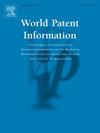Assessing the standard-essentiality of 5G technology patents by means of generative artificial intelligence
IF 1.9
Q2 INFORMATION SCIENCE & LIBRARY SCIENCE
引用次数: 0
Abstract
In telecommunication technology, identifying standard-essential patents (SEPs) plays a crucial role in the management of intellectual property. This technology is regulated by technical standards that are largely based on the content of SEPs. These patents are declared standard-essential by their owners because they contain elements of a technical standard. The declaration process leaves room for over- and under-declaration, which entails risks for organizations. This paper focuses on the question of how generative artificial intelligence can be used to assess the standard-essentiality of 5G technology patents. For this purpose, the standard-essentiality is assessed using different prompts with four Large Language Models (LLMs) in two variants. In the first variant, the LLM results are generated by a rather simple prompt and compared with an approach based on unsupervised and supervised machine learning. The result shows that large LLMs are capable of assessing the standard-essentiality. In the second variant, the best-performing LLM is selected and the prompt is expanded to include selected parts of a technical standard. While the assessment results remain largely the same, the LLM is now able to explain in which detail a patent is part of a standard. This has several implications for patent evaluation, licensing and litigation strategies.
利用生成式人工智能评估5G技术专利的标准必要性
在电信技术领域,标准必要专利(sep)的识别在知识产权管理中起着至关重要的作用。该技术受主要基于sep内容的技术标准的监管。这些专利被其所有者宣布为标准必需专利,因为它们包含技术标准的元素。申报过程为申报过多和申报不足留下了空间,这给组织带来了风险。本文重点讨论了如何使用生成式人工智能来评估5G技术专利的标准必要性。为此,使用不同的提示来评估标准的重要性,这些提示带有两个变体中的四个大型语言模型(llm)。在第一种变体中,LLM结果是由一个相当简单的提示生成的,并与基于无监督和有监督机器学习的方法进行比较。结果表明,大型llm能够评估标准必要性。在第二个变体中,选择性能最好的LLM,并将提示扩展为包含技术标准的选定部分。虽然评估结果基本保持不变,但法学硕士现在能够解释专利在哪些细节上是标准的一部分。这对专利评估、许可和诉讼策略有几个影响。
本文章由计算机程序翻译,如有差异,请以英文原文为准。
求助全文
约1分钟内获得全文
求助全文
来源期刊

World Patent Information
INFORMATION SCIENCE & LIBRARY SCIENCE-
CiteScore
3.50
自引率
18.50%
发文量
40
期刊介绍:
The aim of World Patent Information is to provide a worldwide forum for the exchange of information between people working professionally in the field of Industrial Property information and documentation and to promote the widest possible use of the associated literature. Regular features include: papers concerned with all aspects of Industrial Property information and documentation; new regulations pertinent to Industrial Property information and documentation; short reports on relevant meetings and conferences; bibliographies, together with book and literature reviews.
 求助内容:
求助内容: 应助结果提醒方式:
应助结果提醒方式:


